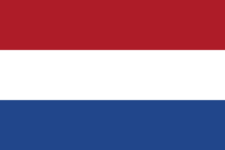What To Expect
The Netherlands, also often known as Holland, is one of the most visited countries in Europe thanks to its spectacular cities, beautiful countryside, great festivals, and picturesque towns.
Most people visit Amsterdam and move on, but the ones that stick around and explore the rest of the country do not regret it!
In addition to Amsterdam which is known for its unique red-light district, coffeeshops that sell more than coffee, and multiple canals that are lined with those famous tall and thin buildings, there are many other towns and cities worth a visit.
Some of the most notable include Leiden, Delft, The Hague, Utrecht, Rotterdam, Maastricht, Groningen, and Haarlem. And if you’re a fan of cheese, visits to the towns of Edam and Gouda, as well as Alkmaar and Woerden for their cheese festivals, are a must!
In addition, the Dutch countryside is also home to spectacular scenery like the famous windmills at Kinderdijk and the tulips at the Keukenhof Gardens (which come into bloom every spring). And believe it or not, the Netherlands is also home to several great beaches that locals love to flock to in the summers!
The Netherlands is so full of many wonderful things to see and do that you can’t go wrong with a visit!

The Netherlands is part of the Schengen Area which has a single visa policy for all the countries that are in it. Citizens of most developed countries can enter the Schengen Area visa-free for up to 90 days in a 180 day period. If you are not a citizen of a visa-exempt country, you must go to the nearest Dutch embassy and apply for a Schengen Visa to be granted entry.
There are no health risks in the Netherlands requiring any specific travel vaccinations for normal travelers. Make sure you are up to date on your standard vaccinations and consult a health professional for further advice.
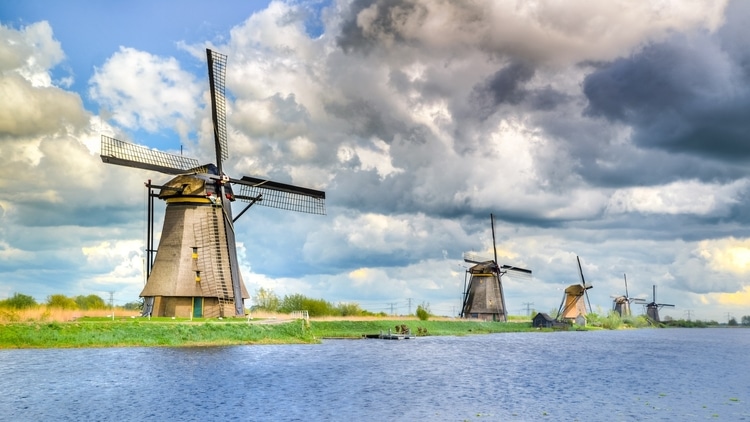
This page may contain affiliate links which means I get a small commission, at no extra cost to you, if you make a purchase with them. This helps keep the site running and the travel tips coming! For more info, check out my Privacy Policy & Disclosure.
Key Information
Population: 17 Million
Capital City: Amsterdam
Languages Spoken: Dutch
Currency: Euro (EUR/€)
State Railway: NS
Driving Side: Right
Largest Airports:
1. Amsterdam (AMS) – Schiphol
2. Eindhoven (EIN)
3. Rotterdam (RTM) – The Hague
4. Maastricht (MST) – Aachen
5. Groningen (GRQ) – Eelde
Best Time To Visit
Being on the coast of the North Sea, the Netherlands has a maritime climate. This means chilly winters and warm summers. Spring and autumn can be quite unpredictable, but generally have decent weather.
The best time to visit the Netherlands is in the spring (April – May) when the tulips are in full bloom and there aren’t as many crowds as in the summer. If you aren’t interested in the tulips, then autumn (September – October) can be a great time too as your transportation & accommodation will be cheaper and you won’t have to wait in long line-ups when visiting some of the main attractions.
However, if you don’t care about the crowds and you just want the best weather possible for your trip, then the summer (June – August) is the best time to visit. Just make sure to book your transportation and accommodation in advance as the summer is the busiest time of the year in the Netherlands!
High Season: June – August
Low Season: November – March
Top 5 Destinations
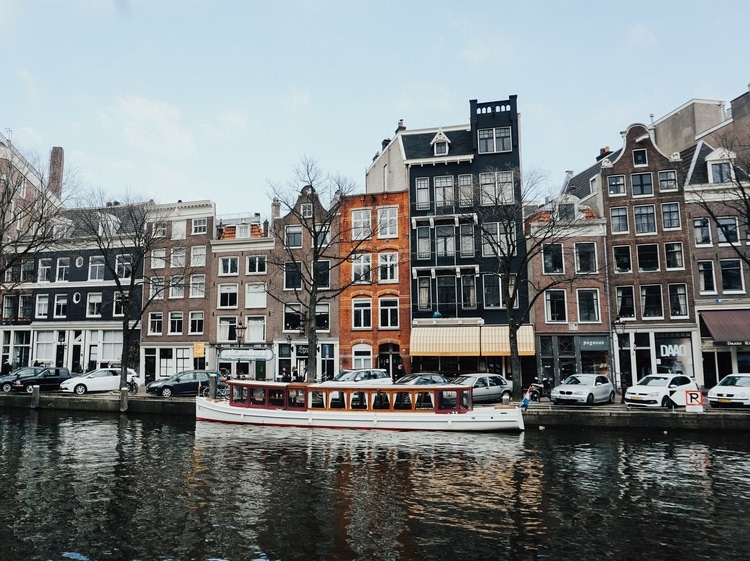
Amsterdam
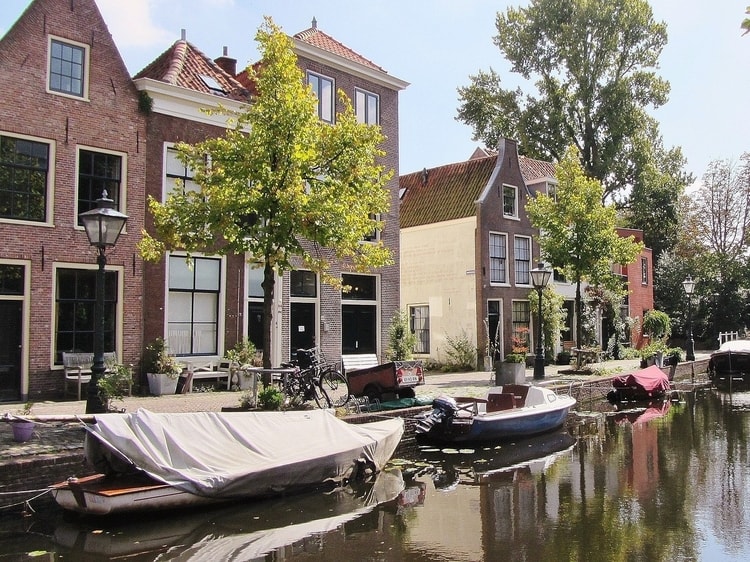
Leiden

The Hague
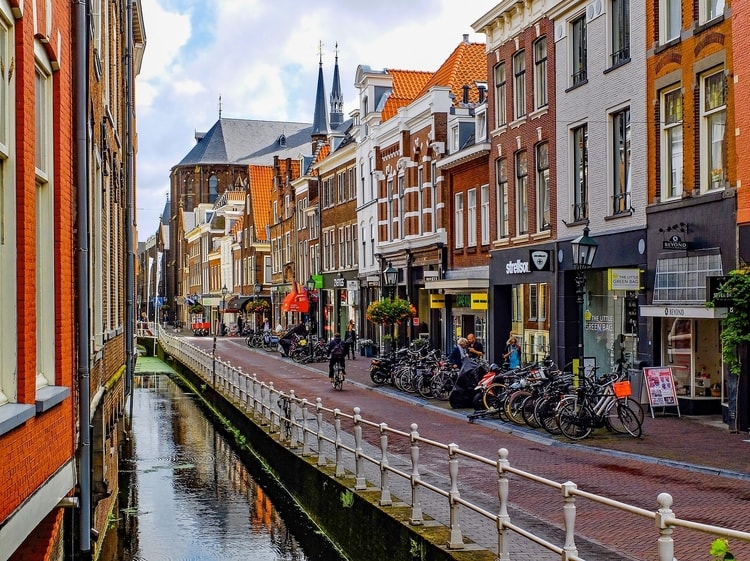
Delft

Kinderdijk
Currency Information
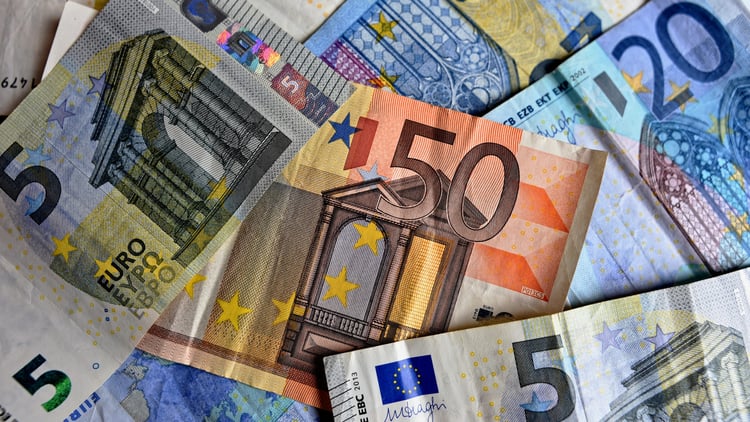
The currency used in the Netherlands is the Euro (EUR/€). The notes come in denominations of 5€, 10€, 20€, 50€, & 100€.
The Euro is further divided into 100 euro cents – “cent” in Dutch – (c). The coins come in denominations of 1c, 2c, 5c, 10c, 20c, 50c, 1€, & 2€.
Use the currency converter below to determine the latest exchange rate.
Cellphone Information
The Netherlands has excellent overall 4G LTE coverage so it is unlikely that you will ever need to use their 3G networks, but it doesn’t hurt to be safe anyways.
Make sure your phone is GSM-compatible with at least one of the 3G frequencies and the primary 4G LTE band used in the country to ensure you will always have connection.
Learn more about this in my Guide to Travel-Ready Phones.
Information about local prepaid SIM cards in the Netherlands
Calling Code: +31
Emergency Number: 112 (Police, Ambulance, & Fire)
3G Frequencies Used: 2100 & 900
4G LTE Bands Used: 7 (primary) + 1, 3, 8, 20, & 38
Power Outlet Information
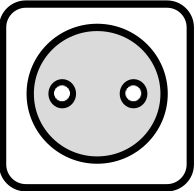
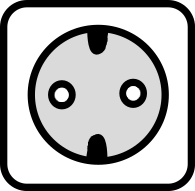
Just like most of Europe, the Netherlands mainly uses the Type C power outlet. However, they also use the Type F outlet.
Type C & E plugs can fit in a Type F outlet as long as they are compatible. Make sure your Type C adapter is oval-shaped or you have a Type E/F adapter.
Get your compatible Type C & Type E/F adapter here.
The voltage used in the Netherlands is 230V. Learn more about how this may affect your electronic devices in my Guide to the Top Travel Accessories.

Tipping Guide
Tipping is not customary in the Netherlands, but if you wish to tip for good service, here are some guidelines to follow:
Hotel Bellhops: 1-2€ per bag
Hotel Housekeepers: 1-2€ per day
Restaurant Servers: up to 10% of the total bill
Cafés & Baristas: round up to the nearest whole number
Bartenders: round up to the nearest whole number
Taxi/Uber Driver: round up to the nearest whole number
Tour Guide: up to 10% of the total tour price on single-day tours and 5-10€ per day on multi-day tours
Note: Tips should be left in cash as any tips left on card machines or bills go straight to the owners.

